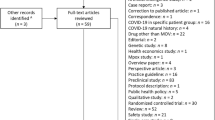Abstract
A major cause of failure of antiretroviral therapy (ART) is the presence of drug-resistance-associated mutations in the polymerase gene of HIV-1. The paucity of data regarding potential drug resistance to reverse transcriptase inhibitors (RTIs) prompted us to carry out this study. This information will shed light on the extent of drug resistance already present in HIV strains and will give future directions in patient treatment and in drug design. Drug resistance genotyping of a partial reverse transcriptase gene was done in 103 HIV-1-infected patients, including the ART-naive and ART-experienced population. The drug resistance pattern was analyzed using the Stanford HIV-DR database, the IAS-USA mutation list and the REGA algorithm-v8.0. Subtyping was done using the REGA HIV-1 subtyping tool-v2.01. The majority of our sequences (96 %) were found to be subtype C, and four (3.8 %) were subtype A1. Significant prevalence of DR mutations (28 %) was observed in the RT gene. Major amino acid substitutions were seen at positions 41, 90, 98, 103, 106, 108, 138, 181, 184, 190, 215, and 219, which confer high/intermediate levels of resistance to most RTIs, independently or together. Our results show that there is an urgent need to tailor ART drug regimens to the individual to achieve optimum therapeutic outcome in North India.

Similar content being viewed by others
References
Neogi U, Bontell I, Shet A, De Costa A, Gupta S, Diwan V, Laishram RS, Wanchu A, Ranga U, Banerjea AC, Sönnerborg A (2012) Molecular epidemiology of HIV-1 subtypes in India: origin and evolutionary history of the predominant subtype C. PLoS One 7(6):e39819. doi:10.1371/journal.pone.0039819
Sinha S, Ahmad H, Shekhar RC et al (2012) Prevalence of HIV drug resistance mutations in HIV type 1 Isolates in antiretroviral therapy naive population from Northern India. AIDS Res Treat. doi:10.1155/2012/905823
Xing H, Ruan Y, Li J, Shang H, Zhong P, Wang X, Liao L, Li H, Zhang M, Xue Y, Wang Z, Su B, Liu W, Dong Y, Ma Y, Li H, Qin G, Chen L, Pan X, Chen X, Peng G, Fu J, Chen RY, Kang L, Shao Y (2013) HIV drug resistance and its impact on antiretroviral therapy in Chinese HIV-infected patients. PLoS One 8(2):e54917. doi:10.1371/journal.pone.0054917
Tang MW, Shafer RW (2012) HIV-1 antiretroviral resistance: scientific principles and clinical applications. Drugs 72(9):e1–e25. doi:10.2165/11633630-000000000-00000
Hira SK, Panchal K, Parmar PA, Bhatia VP (2004) High resistance to antiretroviral drugs: The Indian experience. Int J STD AIDS 15(3):173–177
Stanford Drug Resistance Database. http://hivdb.stanford.edu
Johnson VA, Calvez V, Gunthard HF, Paredes R, Pillay D, Shafer RW, Wensing AM, Richman DD (2013) Update of the drug resistance mutations in HIV-1. Top Antivir Med 21(1):6–14
REGA algorithm version 8.0.2. http://www.kuleuven.ac.be/rega/cev/links or http://www.rega.kuleuven.be/cev/
HIV-GRADE (Genotypic Resistance-Algorithm DEutschland). http://www.hiv-grade.de/cms/grade/homepage.html
Boden D, Hurley A, Zhang L et al (1999) HIV-1 drug resistance in newly infected individuals. JAMA 282(12):1135–1141
Arora SK, Gupta S, Toor JS, Singla A (2008) Drug resistance-associated genotypic alterations in the pol gene of HIV type 1 isolates in ART-naive individuals in North India. AIDS Res Hum Retro 24(2):125–130
Deshpande A, Karki S, Recordon-Pinson P, Fleury HJ (2011) Drug resistance mutations in HIV type 1 isolates from naive patients eligible for first line antiretroviral therapy in JJ Hospital, Mumbai, India. AIDS Res Hum Retro 27:1345–1347
Kandathil AJ, Kannangai R, Abraham OC et al (2009) The frequency of HIV-I drug resistance mutations among treatment-naive individuals at a tertiary care centre in south India. Int J STD AIDS 20:522–526
Shulman NS, Machekano RA, Shafer RW, Winters MA, Zolopa AR, Liou SH, Hughes M, Katzenstein DA (2001) Genotypic correlates of a virologic response to stavudine after zidovudine monotherapy. J Acquir Immune Defic Syndr 27(4):377–380
Montes B, Segondy M (2002) Prevalence of the mutational pattern E44D/A and/or V118I in the reverse transcriptase (RT) gene of HIV-1 in relation to treatment with nucleoside analogue RT inhibitors. J Med Virol 66(3):299–303
Potdar PD, Daswani BS, Rane NJ (2011) Drug resistance mutations to protease and reverse transcriptase inhibitors in treatment naïve HIV-1 clade C infected individuals from Mumbai, India. Int J Virol 7(1):13–23
Deshpande A, Recordon-Pinson P, Deshmukh R et al (2004) Molecular characterization of HIV type 1 isolates from untreated patients of Mumbai (Bombay), India, and detection of rare resistance mutations. AIDS Res Hum Retrovir 20:1032–1035
Lall M, Gupta RM, Sen S, Kapila K, Tripathy SP, Paranjape RS (2008) Profile of primary resistance in HIV-1-infected treatment-naive individuals from Western India. AIDS Res Hum Retrovir 24(7):987–990
Llibre JM, Santos JR, Puig T, Moltó J, Ruiz L, Paredes R, Clotet B (2008) Prevalence of etravirine-associated mutations in clinical samples with resistance to nevirapine and efavirenz. J Antimicrob Chemother 62(5):909–913
Maïga AI, Descamps D, Morand-Joubert L, Malet I, Derache A, Cisse M, Koita V, Akonde A, Diarra B, Wirden M, Tounkara A, Verlinden Y, Katlama C, Costagliola D, Masquelier B, Calvez V, Marcelin AG (2010) Resistance-associated mutations to etravirine (TMC-125) in antiretroviral-naïve patients infected with non-B HIV-1 subtypes. Antimicrob Agents Chemother 54(2):728–733
Wu H, Zhang HJ, Zhang XM, Xu HF, Wang M, Huang JD, Zheng BJ (2012) Identification of drug resistant mutations in HIV-1 CRF07_BC variants selected by nevirapine in vitro. PLoS One 7(9):e44333. doi:10.1371/journal.pone.0044333
Acknowledgments
This work was partially supported by grants from the Indian Council of Medical Research (ICMR), India. We are also thankful to Super Religare Laboratories Ltd., Gurgaon, Haryana (India) for quantifying the HIV viral load in some patients.
Conflict of interest
The authors declare that there are no conflicts of interest.
Ethical standard
This study was approved by the Institutional Ethics Committee (Reference No. D.No.1192/FM on 27 August, 2011), Jawaharlal Nehru Medical College (J.N.M.C), Faculty of Medicine, Aligarh Muslim University (A.M.U), Aligarh-INDIA.
Author information
Authors and Affiliations
Corresponding authors
Additional information
Abida Malik and Arvind Rai these authors contributed equally to this work.
Rights and permissions
About this article
Cite this article
Azam, M., Malik, A., Rizvi, M. et al. Trends of drug-resistance-associated mutations in the reverse transcriptase gene of HIV type 1 isolates from North India. Arch Virol 159, 719–725 (2014). https://doi.org/10.1007/s00705-013-1889-y
Received:
Accepted:
Published:
Issue Date:
DOI: https://doi.org/10.1007/s00705-013-1889-y




